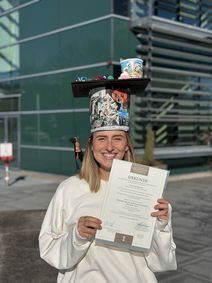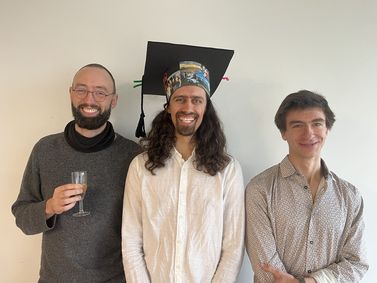Congratulations to Dr. Lisa Schmors and Dr. Jan Lause for successfully finishing their PhD!
Lisa´s research has helped us better understand how brains process sensory information, including vision. Using statistical methods and recordings of brain activity, she explored how different brain regions work together. Her research revealed how parts of the brain communicate with each other, how we process unpleasant experiences, and how neural circuits help us learn to associate certain cues with danger. Working at the intersection of data science and neuroscience, she showed how insights from brain research can enhance our understanding of biological computation while also inspiring more interpretable machine learning models.
Looking ahead, she will continue exploring brain functions as a postdoctoral researcher at the Hertie AI. We are excited to see her future contributions to our understanding of neural information processing.
Jan´s research project was about single-cell transcriptomics, a technique that measures the gene activity “fingerprint” of single cells in a sample. Neuroscientists use these genetic fingerprints to understand which different cell types exist in the brain and how gene activity differs between these types. However, these fingerprint signals are often masked by strong technical noise from the measurement process. Jan’s work helps uncovering the fingerprints again: He developed methods that model and remove technical noise from single-cell transcriptomics data, helping future researchers to discover new brain cell types by their fingerprints. Additionally, Jan worked on how to visualise high-dimensional data like the genetic fingerprints, using machine learning methods like t-SNE and UMAP. He showed which aspects of the original data these visualisation methods preserve and where they introduce distortions.
For his postdoc at the Hertie AI, Jan will apply his knowledge to exciting questions in the neuroscience of the retina – for example how exactly the enigmatic group of amacrine cells shapes the signals that the eye sends to the brain.

